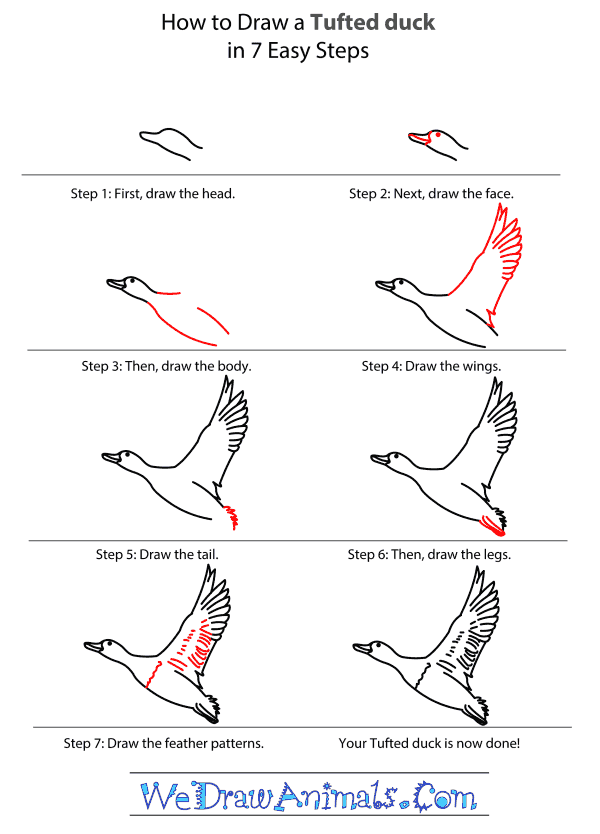In this quick tutorial you'll learn how to draw a Tufted Duck in 7 easy steps - great for kids and novice artists.
The images above represent how your finished drawing is going to look and the steps involved.
Below are the individual steps - you can click on each one for a High Resolution printable PDF version.
At the bottom you can read some interesting facts about the Tufted Duck.
Make sure you also check out any of the hundreds of drawing tutorials grouped by category.
How to Draw a Tufted Duck - Step-by-Step Tutorial
Step 1: First, draw the head. The beak is rounded and the neck is thin.
Step 2: Next, make the face. Draw a line across the beak and then one dividing it down the middle. Add an eye.
Step 3: Draw a thin, bottle shaped body. Leave a space open for the wing, and another for the tail.
Step 4: Now make the wing. Draw the line up mostly straight, add some feather details on a slope back down.
Step 5: Add a zigzag line at the bottom of the body for the tail.
Step 6: Make some straight lines for the legs.
Step 7: Last, draw some lines to make detail on the wings and chest. Your tufted duck is now done!
Interesting Facts about the Tufted Duck
The tufted duck (Aythya fuligula) is a type of diving duck, which means it dives under the water to catch food. They range far across the world, being found in Europe and the UK, all of the way to Russia and sometimes Asia. Sometimes, they migrate to the United States.
Did you know?
- Male tufted ducks are bigger than females. Males are black and white and have a bigger tuft on the back of their heads, while females are brown and have a smaller tuft.
- Tufted ducks like to lay their eggs near shallow water, and will lay 8 to 11 eggs.
- Ducklings will all hatch within 24 hours of each other and follow their mother around until they are about two months old, after which they will become independent.
- Their favorite foods are mussels, but they will also feed on insects and some plants.
- During the winter months, tufted ducks prefer larger and deeper bodies of water.
Lesson plan note: Discuss the migratory pattern of the tufted duck, and what kind of place it might migrate to in order to breed during certain parts of the year.








